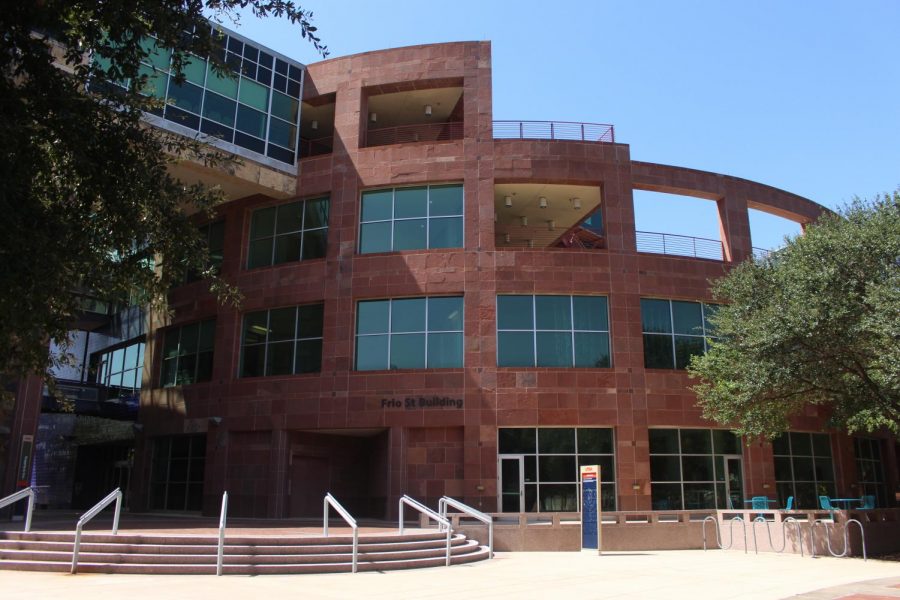Two years into a pandemic and Downtown students are still left behind
September 7, 2021
One of the key components to President Eighmy’s ambitious ten year strategic vision, which launched in 2017, includes a new and improved downtown campus. Four years into the plan, the university website has claimed that “UTSA’s 10-year vision has breathed life into downtown San Antonio.” Despite UTSA’s ambitious commitment, the current state of the Downtown Campus remains a far cry from what the university has claimed to be an “electric” and “vibrant” momentum.
Historically, UTSA’s Downtown Campus has not been afforded the same luxuries as Main Campus. During the Spring 2021 semester, UTSA announced the closure of the Rowdy Store, which forced students to gather their course materials from the Main Campus Rowdy Store, an almost thirty minute drive for students who live downtown. Aside from the Rowdy Store, the Downtown Campus closed its library, Starbucks, gym, Rowdy Pantry and cafeteria.
Unfortunately, the same actions echo today. Gabe Lugo, co-chair of Downtown Affairs for the Student Government Association, was able to shed light on the current state of Downtown Campus.
Many of the campus features, such as the library and gym, remain shut down.
“It’s still very much a ghost town,” Lugo said. “I don’t know, to me it kind of just seems like we’re giving it to one and not the other. “If we’re supposed to be on the same page it’s kind of like, why wouldn’t we have the same kind of capacity as the main campus? Especially when our Downtown students really rely on that and if they’re downtown, they’re not going to travel nearly an hour away for Main Campus activities.”
UTSA continues to promote its advancement of the Downtown Campus and champions the university receiving $70 million for its expansion, as well as many approvals for land and construction.
“I do believe that they are investing money,” Lugo said. “But at the same time, is it at the rate that it should be? Of course not. I don’t think any schools are being funded the way that they should be.”
Again, Lugo’s attitude toward the slow efforts of expansion reveal the contradiction between UTSA’s “vision” and the reality being expressed by those closest to Downtown Campus. According to the UTSA Strategic Planning website, the mission of the task force was to “enable Downtown students to have a comprehensive living and learning experience, without the need to travel to the Main Campus.”
Lugo went on to explain his frustration at the disparities between Main Campus and Downtown even though students are charged the same in tuition.
“We are still charged full price on everything, so it seems like we are charged a full price academically, but are receiving a discounted version with the limited resources on campus,” Lugo said.
To the same point, Lugo also advocated for Downtown students, mentioning that just as Main Campus students are afforded simple luxuries such as visiting the library, or grabbing coffee, downtown students should be able to as well.
“It’s just not feasible for somebody to want to travel almost an hour for a library that they could potentially use down the street,” Lugo said. “I do think that there may not have been enough conversations about what is fair in terms of our capacity for both campuses.”
As the co-chair for Downtown Affairs, Lugo plays a role in advocating for the Downtown community. Lugo also explained the role San Antonio’s existing culture will have in the future of downtown.
“So that means having different events they’re holding, expanding our ideas of culture, hosting events with our markets, or hosting events with organizations down there so we can give an incentive for being at Downtown Campus,” Lugo said. “There’s already so much culture that’s down there, so we shouldn’t be trying to bring in more culture, but we could just already work off of what we have down there and that idea of community is important.”
Despite the committee’s ambitions, there are still multiple steps that slow down the process, which means timeline of progress could be hindered.
“As far as the red lining and the bureaucracy behind it all, it’s kind of a little lagging,” Lugo said. “With any initiative, it’s going to take weeks and months to get done.
Additionally, Lugo and his co-chair have worked to push the validity of Downtown Campus and advocate for equality between the two campuses.
“That’s something we’re trying to push right now: the idea that you can fully graduate and go all four years at Downtown Campus and not even set foot on Main Campus,” Lugo said. “A cornerstone of our work is just understanding that [Downtown Campus] is a canvas that has potential and is growing rapidly.”
Lugo shared that he has a “strategic plan” for the Downtown Campus, expressing hope that it would become self-sustainable and that students would feel their academic needs were met in Downtown’s close-knit community.







